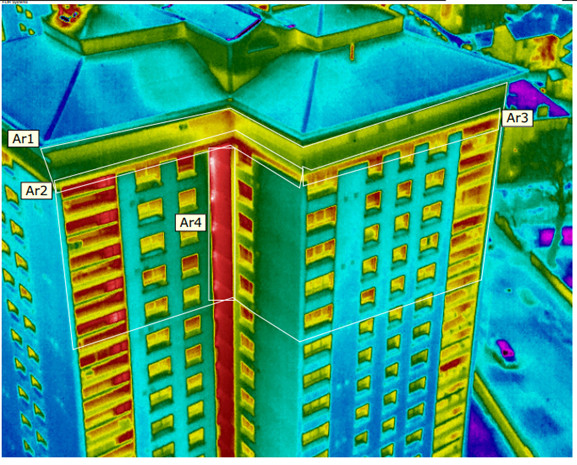Energy efficiency retrofits

The recent cuts to pensioners’ winter fuel allowance and the 10% increase in the energy price cap highlight the urgent need to retrofit the UK’s existing housing stock. While the government is committed to improving energy efficiency in homes, the task is monumental, with over four million properties within the social housing sector alone. Lisa Cairns, Business Development & Improvement Manager at IRT Surveys, discusses how data and technology improve retrofit decision-making for housing providers and construction professionals.
The estimated cost of upgrading all existing homes so that they are Net Zero by 2050 is a staggering £104 billion. The government’s immediate focus is on rented accommodation, both private and social, where it wants to see homes meet minimum energy efficiency standards by 2030. Over the next five years, £6.6 billion in grants and low interest loans, together with private finance, will be available to help deliver this. While this investment is welcomed, the scale of the task means that the social housing sector will need to manage budgets in a way that delivers the maximum energy efficiency improvements.
To achieve cost effectiveness and provide residents with truly energy efficient homes, especially when retrofitting at scale, the most effective approach is to tackle the specific problems of individual properties. Instead of rolling out potentially unnecessary and wasteful upgrades across all homes, budgets can be spent more wisely by identifying and addressing the issues with each home, for instance, render delamination, missing insulation, porous brickwork or problems with waterproofing.
Why data is crucial
Data plays a vital role in providing detailed information about individual properties. These important insights sharpen project-wide decision-making and help housing providers and construction professionals understand the most effective pathway for decarbonising housing stock at scale. At the same time, it ensures that energy efficiency improvements can be tailored to the needs of specific properties, providing better outcomes for residents and increased cost efficiency for the project.
A key example of how the latest technology is used to collect valuable housing stock data is thermal imaging. Offering precise visual insights into a home’s energy deficiencies and the condition of the building fabric, it gives a clearer understanding of the property’s thermal performance. Thermal imaging detects issues undiscovered via alternative survey methods, such as porous brickwork, draughts, ineffective insulation, unfilled wall cavities and waterproofing and rendering defects. Moreover, when this ‘fabric-first’ approach is utilised across housing stock, it provides a set of measures that empower housing providers and construction professionals to make data-driven decisions.
In comparison to conventional surveying techniques, thermal imaging provides a number of other benefits. It is not invasive, so there is no damage to repair, and it doesn’t require scaffolding, reducing cost and timescales. Indeed, an inclusive single-property survey can be conducted quickly, making thermal imaging a convenient and cost effective solution that identifies issues swiftly so they can be promptly addressed.
Identifying defects

What’s more, new technologies, like MappIR, can also benefit the retrofit decision-making process. A specialist vehicle that combines visual and thermal imaging and LiDAR technology, MappIR can survey streets, housing estates and even cities, delivering insightful energy efficiency data about individual properties across large
areas – and do so quickly and at low cost. While scanning, it assesses the condition of the building fabric, identifying a wide range of defects, including heat loss, poor insulation, water ingress, damp and ‘at risk’ properties. A highly effective solution for local authorities delivering improvements to ‘area based’ schemes and ‘place based’ projects, MappIR has already been successfully deployed in Milton Keynes where it surveyed over 10,000 social homes.
While specialist technology is used to collect data, it is by adopting advanced retrofitting software that housing providers can obtain a clear picture of the specific energy efficiency upgrades required for each property. They are able to cost the necessary improvements with accuracy and, crucially, match their retrofit programmes to available finances. In addition, these sophisticated applications also track the progress of a retrofit project, monitoring the improvements made and advances towards energy efficiency and decarbonisation, in turn assisting in ensuring a project can meet targets cost effectively, while achieving the desired results for residents and the environment.
In a recent project in the South of England, a combination of thermal imaging and retrofitting software was successfully used to upgrade 200 homes of varying construction types. After thermal images of the homes were analysed to identify defects, insulation issues and heat loss, the data was processed using mapping and filtering tools to assess the most appropriate retrofit approach. This enabled the housing provider to group the properties, prioritise improvements and find and apply for relevant funding.
The benefit of experienced partners
To achieve the government’s 2030 energy efficiency and 2050 Net Zero targets, housing providers will need to implement retrofit projects at scale and at pace. Operations of this size, however, require complex planning and management. Partnering with a company experienced in delivering successful projects for leading organisations enables housing providers and construction professionals alike to benefit from the expertise. Moreover, they can take advantage of an efficient suite of services that utilises advanced technologies as well as proven software and hardware, assuring them of a comprehensive solution that delivers in-depth insights into their housing stock’s complete retrofitting needs.







